Los primeros siete días después del trasplante de cabello
- Hogar
- »
- Contorno corporal
- »
- Liposucción en Estambul: Consigue el cuerpo de tus sueños con técnicas avanzadas
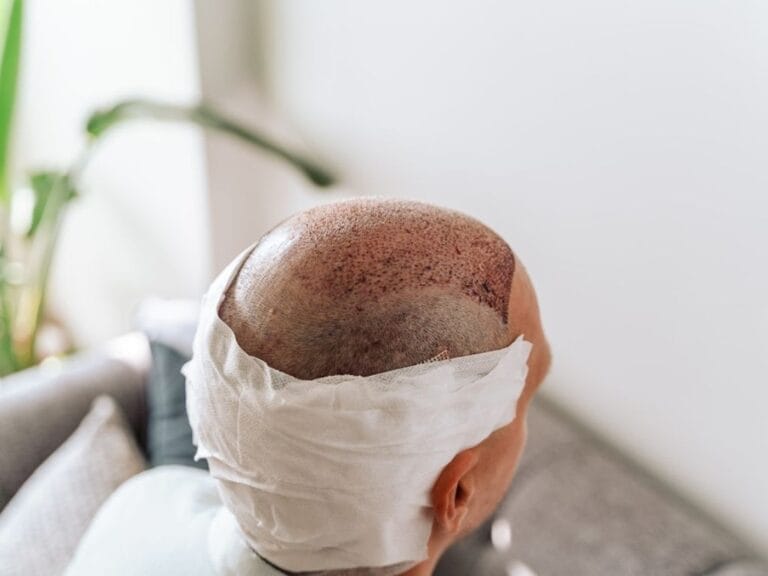
Introducción
Los primeros siete días después del trasplante capilar son un período crítico que puede influir significativamente en el éxito del procedimiento. Durante este tiempo, los folículos pilosos recién trasplantados son delicados y requieren un manejo cuidadoso para asegurar que se arraiguen y comiencen el proceso de curación. Esta guía le explicará qué esperar durante el procedimiento. primeros siete días después de un trasplante de cabello y proporcionar instrucciones de cuidado detalladas para ayudarle a lograr los mejores resultados posibles.
Importancia de la primera semana en la recuperación
La primera semana después de tu trasplante de cabello Establece las bases para una recuperación exitosa. Un cuidado adecuado durante este período puede prevenir complicaciones, minimizar las molestias y favorecer un crecimiento capilar saludable. Comprender qué esperar y cómo cuidar el cuero cabelludo le ayudará a afrontar esta fase crucial con confianza.
Día 1: Cuidados postoperatorios inmediatos
Qué esperar después de la cirugía
Inmediatamente después de su trasplante de cabelloEs normal experimentar enrojecimiento, hinchazón y sensibilidad en las áreas tratadas. cabello trasplantado Los folículos aparecerán como pequeños puntos en el cuero cabelludo, y es posible que notes algo de tirantez o una leve molestia. Estos síntomas son temporales y suelen desaparecer en unos días.
Cuidado del área de trasplante
Las primeras 24 horas después del procedimiento son cruciales para proteger los folículos recién implantados. Siga estas pautas para garantizar un cuidado óptimo:
- Mantenga la cabeza elevada: Para reducir la hinchazón, mantenga la cabeza elevada mientras descansa o duerme. Una almohada adicional o un sillón reclinable pueden ayudarle a mantener la posición correcta.
- Evite tocar el área del trasplante: Resista la tentación de tocar, frotar o rascar el cuero cabelludo, ya que puede desalojar los injertos e interferir con el proceso de curación.
- Siga las instrucciones de su cirujano: Siga estrictamente las instrucciones de cuidados posteriores de su cirujano, incluidas las recomendaciones sobre lavado o aplicación de tratamientos tópicos.
Día 2-3: Manejo de la recuperación temprana
Lavado y limpieza del cuero cabelludo
Alrededor del segundo o tercer día, su cirujano podría recomendarle que comience a lavarse el cuero cabelludo con suavidad. Aquí le explicamos cómo hacerlo de forma segura:
- Utilice agua tibia: Lávate el cuero cabelludo con agua tibia para evitar irritar la zona.
- Aplicar suavemente el champú: Use un champú suave, aprobado por cirujanos. Aplíquelo suavemente con las yemas de los dedos, evitando frotar o restregar.
- Enjuague cuidadosamente: Enjuague suavemente el cuero cabelludo, asegurándose de que el flujo de agua sea suave y no toque directamente el área trasplantada.
Manejo del dolor
Es normal sentir algunas molestias durante los primeros días después del trasplante. Para controlarlas:
- Tome los medicamentos recetados: Su cirujano podría recetarle analgésicos o antiinflamatorios para aliviar las molestias. Tómelos según las indicaciones.
- Aplicar compresas frías: Para reducir la hinchazón, aplique una compresa fría en la frente o la parte posterior de la cabeza (pero no directamente en el área del trasplante).
Día 4-5: Seguimiento del progreso de la curación
Qué es normal y qué no
A medida que avance la primera semana, es fundamental supervisar su recuperación. Preste atención a lo siguiente:
- Signos típicos: Se espera que haya algo de enrojecimiento, hinchazón leve y picazón a medida que el cuero cabelludo comienza a sanar.
- Signos de complicaciones: Esté atento a un aumento del enrojecimiento, dolor intenso, pus o hinchazón inusual. Si nota alguno de estos síntomas, contacte con su cirujano de inmediato.
Restricciones de actividad
Durante la primera semana, es fundamental proteger los injertos limitando ciertas actividades:
- Evite actividades extenuantes: Evite levantar objetos pesados, agacharse o realizar ejercicios extenuantes, ya que esto puede aumentar la presión arterial en el cuero cabelludo y alterar los injertos.
- Proteger el cuero cabelludo: Si debe salir, use un sombrero holgado para proteger el cuero cabelludo de la luz solar directa y de los contaminantes ambientales.
Día 6-7: Preparación para la siguiente fase
Esperando la formación de costras
Al final de la primera semana, es posible que notes la formación de costras sobre las zonas trasplantadas. Esto es normal durante el proceso de curación.
- Cuidado de las costras: No se rasque ni se rasque las costras. Se caerán naturalmente a medida que cicatrizan. Al lavarse el cuero cabelludo, hágalo con cuidado para no tocarlas.
- Manejo suave del cuero cabelludo: Continúe cuidando su cuero cabelludo. Evite usar productos capilares que su cirujano no le recomiende.
Transición a cuidados a largo plazo
A medida que se acerca al final de la primera semana, comenzará la transición hacia cuidados posteriores a más largo plazo:
- ¿Qué sigue en el proceso de recuperación? Después de la primera semana, comenzarás a notar la fase de caída, donde los cabellos trasplantados se caen para dar paso al nuevo crecimiento. Esto es normal.
- Estableciendo expectativas para las próximas semanas: Es fundamental mantener la paciencia. El total resultados de tu trasplante de cabello Tomará varios meses desarrollarlo.
Preocupaciones comunes durante la primera semana
Picazón y sensibilidad
La picazón es una experiencia común a medida que el cuero cabelludo se cura, pero es esencial tratarla con cuidado:
- Formas seguras de aliviar la picazón: Los antihistamínicos de venta libre o un tratamiento tópico aprobado por el cirujano pueden ayudar si la picazón se vuelve incómoda. Evite rascarse a toda costa.
Ansiedad por pérdida de impacto
El desprendimiento de cabellos trasplantados y circundantes, conocida como pérdida de choque, es una fase típica que puede causar ansiedad:
- Entendiendo la caída temprana del cabello: En los primeros siete días después de un trasplante de cabello, pérdida de cabello, conocida como pérdida de choque, generalmente ocurre dentro de las primeras dos a tres semanas posteriores al trasplante y es una parte normal del proceso. restauración del cabello proceso. El cabello volverá a crecer en los siguientes meses.
Cómo lidiar con la hinchazón
Puede aparecer hinchazón, especialmente alrededor de la frente y los ojos, después de una trasplante de cabello:
- Consejos para reducir la hinchazón: Mantenga la cabeza elevada mientras duerme y aplique compresas frías en la frente si es necesario. La hinchazón suele remitir en unos días.
Conclusión
La primera semana después de tu El trasplante de cabello es fundamental para garantizar el éxito de su procedimiento. Éxito. Seguir estas instrucciones de cuidados posteriores y supervisar su proceso de curación puede ayudar a proteger los folículos pilosos recién trasplantados y preparar el terreno para un crecimiento capilar saludable. Recuerde que el proceso de recuperación de cada persona es único, así que manténgase en contacto con su cirujano y no dude en contactarlo si tiene alguna pregunta o inquietud. Con el cuidado adecuado, podrá ver los resultados completos de su trasplante capilar en los próximos meses.
Preguntas frecuentes (FAQ)
¿Cómo debo dormir después de un trasplante de cabello?
Duerma con la cabeza elevada durante los primeros días para reducir la hinchazón y proteger los injertos.
¿Cuando puedo lavarme el cabello por primera vez?
Su cirujano recomienda lavarse el cabello suavemente alrededor del segundo o tercer día usando un champú suave y agua tibia.
¿Es normal que se formen costras?
Sí, las costras son parte normal del proceso de curación. Evite rascarlas o arrancarlas; se caerán naturalmente.
¿Qué debo hacer si toco o golpeo accidentalmente los injertos?
Si toca o golpea accidentalmente los injertos, no se preocupe. Consulte con su cirujano si le preocupa cualquier impacto en los injertos.
¿Cuándo debo contactar a mi cirujano durante los primeros siete días después del trasplante de cabello?
Comuníquese con su cirujano si nota signos de infección, como mayor enrojecimiento, pus o dolor intenso, o si tiene alguna inquietud acerca de su proceso de curación.
Galería de antes y después del trasplante capilar: pacientes reales, resultados reales





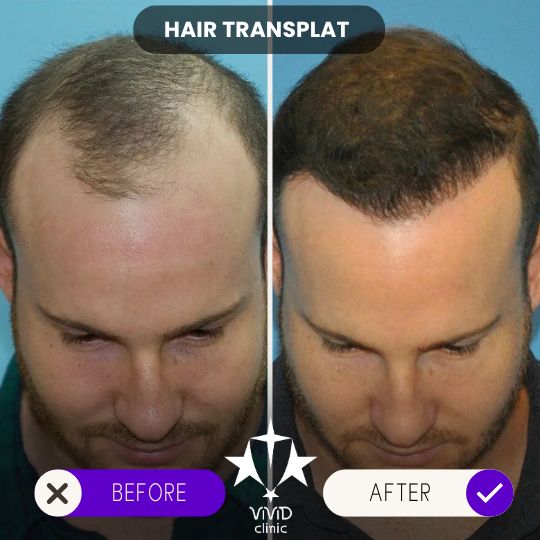
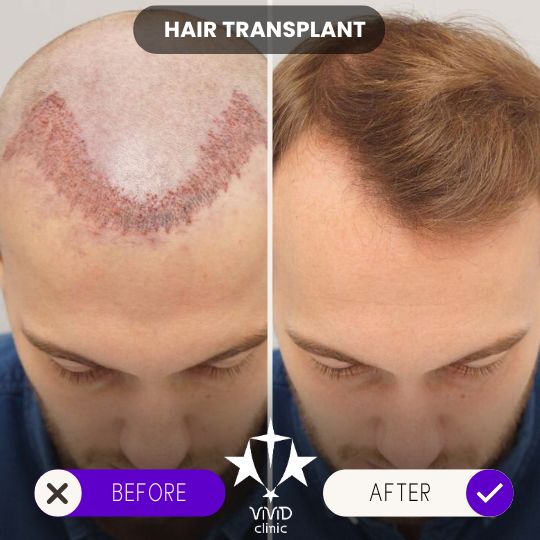
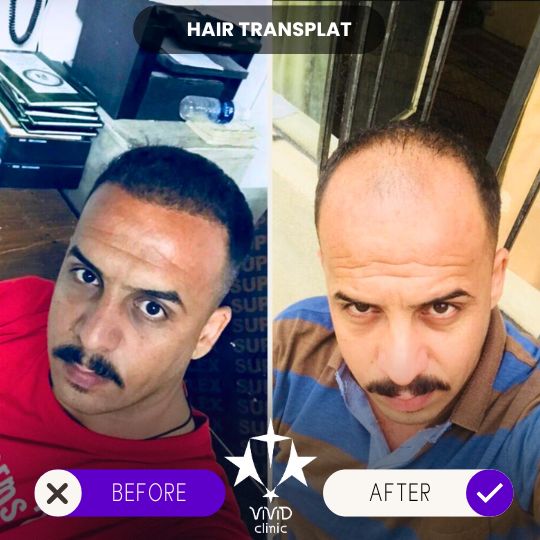
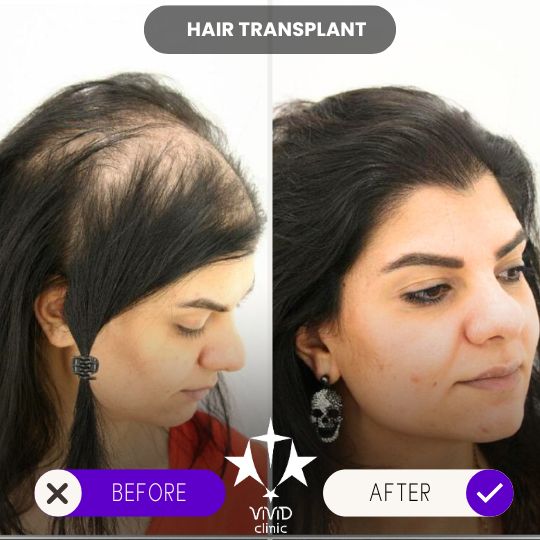
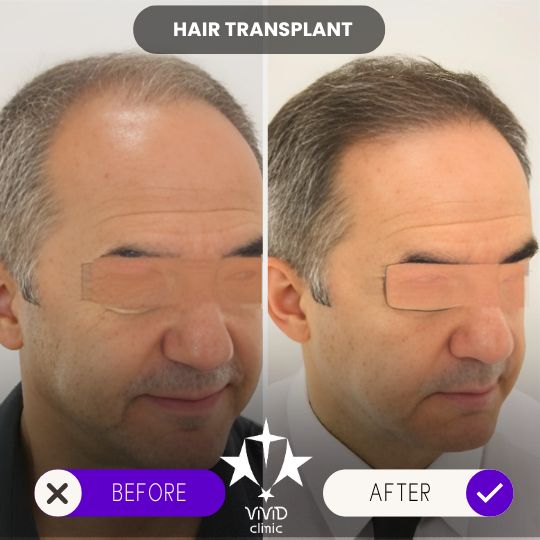
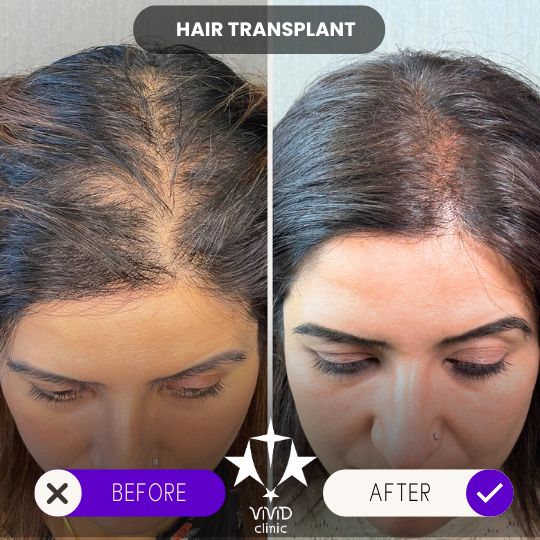
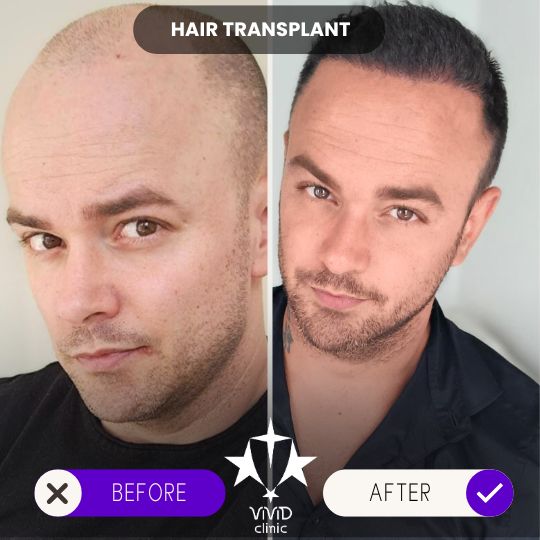
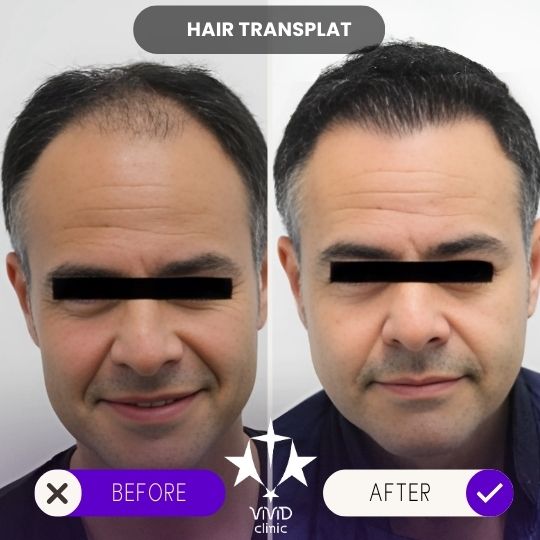

Publicaciones recientes del blog de Vivid Clinic
-
 Cómo la colaboración interdepartamental mejora los resultados de los pacientes
Cómo la colaboración interdepartamental mejora los resultados de los pacientes -
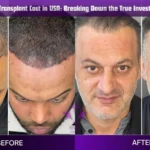 Comparación de costos de trasplante capilar en EE. UU.: Por qué Vivid Clinic ofrece más por menos
Comparación de costos de trasplante capilar en EE. UU.: Por qué Vivid Clinic ofrece más por menos -
 El arte de una nariz hermosa: Guía para lograr la mirada perfecta en Estambul
El arte de una nariz hermosa: Guía para lograr la mirada perfecta en Estambul -
 Efectos secundarios a largo plazo de la cirugía plástica: una guía completa sobre el futuro de su cuerpo
Efectos secundarios a largo plazo de la cirugía plástica: una guía completa sobre el futuro de su cuerpo -
 Efectos secundarios de la cirugía plástica facial: una guía completa de expertos sobre riesgos y recuperación
Efectos secundarios de la cirugía plástica facial: una guía completa de expertos sobre riesgos y recuperación -
 Efectos a largo plazo de la liposucción: Guía completa para el paciente sobre cómo obtener resultados duraderos
Efectos a largo plazo de la liposucción: Guía completa para el paciente sobre cómo obtener resultados duraderos
Publicaciones más populares
-
 Explorando diferentes tipos y formas de nariz para mujeres y hombres
Explorando diferentes tipos y formas de nariz para mujeres y hombres -
 Una guía completa sobre los diferentes tipos de narices: desde la griega hasta la nubia
Una guía completa sobre los diferentes tipos de narices: desde la griega hasta la nubia -
 Nariz romana y otras 9 formas de nariz explicadas: Encuentra tu look perfecto hoy
Nariz romana y otras 9 formas de nariz explicadas: Encuentra tu look perfecto hoy -
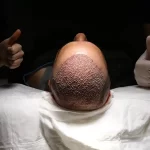 Comparación global de costos de trasplante capilar (2025): ¿Por qué Turquía sigue siendo el mejor?
Comparación global de costos de trasplante capilar (2025): ¿Por qué Turquía sigue siendo el mejor? -
 Trasplantes de cabello de famosos: 7 actores famosos que recuperaron su línea capilar
Trasplantes de cabello de famosos: 7 actores famosos que recuperaron su línea capilar -
 El proceso de trasplante de cabello por el que pasó Elon Musk
El proceso de trasplante de cabello por el que pasó Elon Musk

